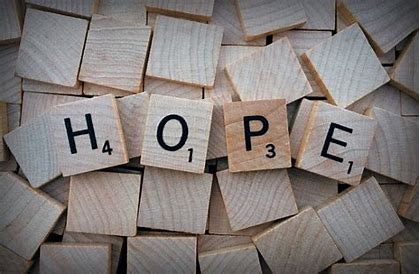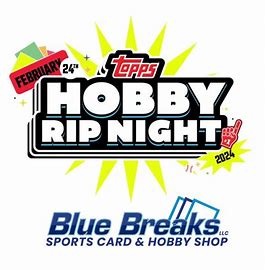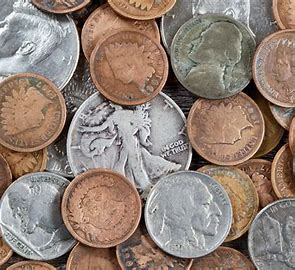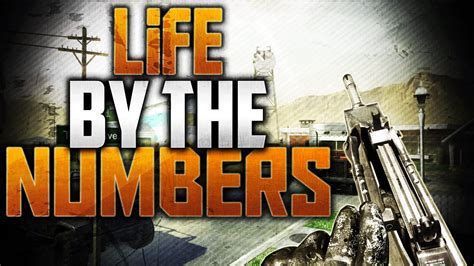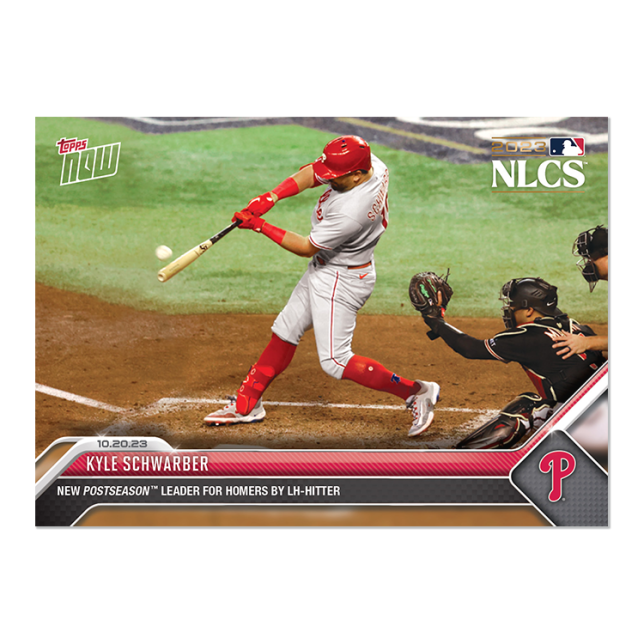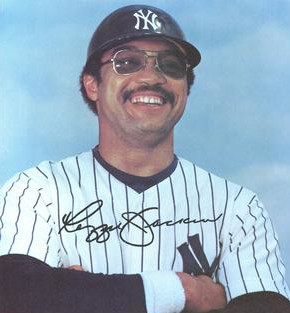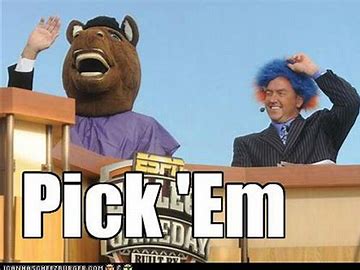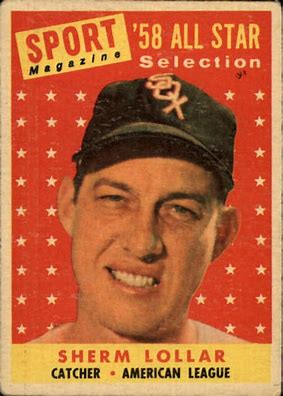Category: Sherm Lollar (Page 1 of 8)
Chicago White Sox Catcher
Despite my better judgement, I keep buying baseball cards. It’s a sad addiction that now seems to be my sole retirement hobby, besides writing about it. I check the Topps Now website daily and recently subscribed to their e-mails, as if I don’t get enough already. I’m also a “Top Fan” of the local Blue Breaks Card Shop and participate in their weekly Hobby RIP Nights. I guess you could say that I now have so many baseball cards that the store owner is starting to display them for me. Most all of my Shohei Ohtani cards (and I’m not even a Dodger’s fan) are stored in a glass case there, hoping for a buyer.
I am a White Sox fan, and follow the Cubs, but most of those player cards have dropped in value to the point that they are worthless. The Sox are easily the worst team in baseball, having lost their 65th game last night. Tim Anderson, following the trade to Miami, was recently designated for assignment, Jose Abreu, traded to the Astros, is washed-up. Yoan Moncada is injured while stars like Luis Roberts and Eloy Jimenez are hitting .230 – no need to dwell. My extensive collection of Sherm Lollar merchandise is unwanted. The Cubs are in last place in the Central division and all my favorites like Bryant, Rizzo, and Baez are playing for other teams.
Last week, on RIP Night, I traded the Blue Jays for the White Sox. I might have had a valuable Vladimir Guerrero card, instead I got a Tim Anderson, just hours before he was sent back to the minors. This week in “The Break” I drew the Twins and Royals, hoping for Jose Miranda, Bobby Whitt, Jr., or Joe Ryan, players that I really don’t care about. I also can’t explain why I bought a Topps Now Miranda yesterday after he made a historical twelve consecutive hits. I guess I did it for trade bait, but I’ve yet to find anyone to trade.
I’ve used the word “Break” in reference to baseball cards during several recent posts. Allow me to have an internet “expert” clarify what it means: “Breaking refers to the practice of opening multiple boxes or cases of a product at the same time, and then distributing the cards to a larger group of paying customers. Breakers sell ‘slots’ to their breaks, and customers receive a defined portion of the opened product. In some cases, the customers will pay for a specific team, which entitles them to any card belonging to a player from that team; in other cases, the customer is simply given a randomized allotment.”
“Breaking has become a major business within the trading card world. Breakers operate websites and often stream their breaks on social media platforms. For high-stakes breaks, it isn’t uncommon for thousands of people to tune in and watch even though they aren’t paying for a slot or receiving any cards.”
I’ve admittedly experimented with Fanatics sites like Mama Breaks and Black Tie Breaks to try and understand this phenomenon. It reminds me of playing fantasy sports where you pick your players, hoping that they perform well. I never had much luck with that game either, because I get too emotional when I pick my players or teams, like the White Sox and Cubs. It’s all gambling, disguised as a hobby, but I’m addicted. In reality, anyone that I pick is likely to “break” an arm or leg.
When I was a kid about 10 years old, I became enamored with an older neighbor who collected coins and baseball cards. He showed me a 1910 Lincoln penny and told me about the rarer 1909-S-VDB. I was immediately fascinated and decided to begin a collection of my own. To make a long story short, I’m still collecting baseball cards but haven’t added to my pennies in years and never found a 1909-S-VDB. I’ve searched everywhere and have had several opportunities to buy one. Now, they are worth over a $1,000 and decidedly not worth my investment. In fact, I could just buy a fake one and who would know but me!
As a result of baseball and coins, the number 10 became special to me. In fact, my favorite player, Sherm Lollar, who played in the 1959 World Series, wore #10. I still collect his memorabilia, but coins, even dated 1910, are no longer a fascination. As a result, I’ve decided to sell all my coins and maybe buy more baseball cards.
I currently have a Lincoln cent collection, Washington Quarters (state editions), and an assortment of change that my mother-in-law gave me. She hoarded Kennedy half-dollars, silver dollars, $2 bills, Susan B. Anthony dollars, and wheat pennies. They were kept in these cloth bank pouches that tie at the top similar to what you see in old time bank robberies. I’ve had these bags in my sock drawer for years. As I’ve searched through them, I’ve also found some Barber and Mercury dimes, Liberty & Franklin halves, a few Sacagawea dollars, Buffalo nickels, foreign currency, and a couple Morgan & Ike dollars. It’s a random assortment of coins that need a new owner.
There’s a coin shop down the street that I’ll be visiting next week, probably to or from my chiropractor appointments. I’ll be lucky to get $1000, with a face value of $325, unless I’ve missed something during the course of valuation. It kept me busy yesterday, while there’s a sense of satisfactory closure to a childhood chapter of treasure hunting. I’m done hunting and gathering, it’s time to simplify and organize.
I’ve spent the last week reorganizing the Mike Museum. There’s now a small, framed painting of Emmett Kelly, the famous clown, done by my grandmother 50-some-years ago. I’ve also been watching the Bill Walton 30-for-30 documentary, “The Luckiest Guy in the World,” so I got down the Trailblazers basketball, wondering if it had his signature – no. It’s actually from the 2007-2008 season, long after their 1977 ABA Championship. All the Indy 500 memorabilia is back in place after last week’s race brunch. The home office is now a hodge podge of these items that I call “my museum.”
There are actually very few personal things of mine on display. Most are hidden away in binders, but there are a few sales and Toastmasters awards on the shelf, along with some of my dad’s. My pledge father’s Sigma Chi fraternity paddle is hung on the wall next to my wife’s Pi Beta Phi sorority paddle. The brass 1919 National Cash register, a reward from my first job, is not filled with money but rather dog tags, wrist bands, wine corks, playing cards, batteries, bottle openers, and other silly memories. Yes, I’m a hoarder, but everything is somewhat organized. Thousands of ticket stubs are encased behind glass. Books fill the spaces between models and bobbleheads, signed by their authors. A world globe reminds me of our travels. Jerseys, photos, and autographs are framed on the walls, even a Portland Timbers championship scarf carefully hung, plus baseball bats and balls housed in plexiglass cases. All my first-name heroes like Sherm, Reggie, Walter, Yogi, Ernie, Bobby and Babe line the walls and shelves. My favorite teams like the White Sox, Cubs, Hoosiers, Blazers, Ducks, Beavers, Boilers, Bears, and Pacers are all represented around me, as well as the venues where they played such as Comiskey Park and Assembly Hall.
The most important things, however, are mostly in binders, hidden away from view. There are thousands of sports cards, press passes, pennants, pins, photos, clippings, magazines, and posters. To many people this would all be junk, but to me it’s a lifetime. I spend many fulfilling hours keeping this stuff in order, as the museum curator. The Sherm Lollar collection, for example, includes over 300 objects from 1945 to present. It may very well be the largest in the world, but no one probably cares but me. Few people know who he is, and the baseball Hall of Fame has certainly forgotten his catching accomplishments. Today’s sport fans certainly know of Shohei Ohtani. His collection in my museum now includes in excess of 200 baseball cards. “Excess” is probably a good word to describe my hobby and Mike’s Museum, where admission is free.
It’s the middle of May and the start of the WNBA regular season, while the NBA playoffs begin to wind down. The Indiana Fever and Caitlin Clark had a tough debut against the Connecticut Sun, while the Indiana Pacers failed to maintain their winning momentum and fell badly to the Knicks. Shohei Ohtani had another big night at the plate for the Dodgers, while the Cubs lost to the Braves and the Sox split with the Nats. The Phillies and Kyle Schwarber were the first team to 30-wins, while the White Sox joined the Marlins in the 30-loss club. I.U. baseball plays the final series of the regular season against Michigan. Alex Palou won the Indy Grand Prix, in preparation for the upcoming Indy 500. That’s about it for me in the world of sports.
I just added my 250th item to the Sherm Lollar collection, a couple of more magazine clippings from 1947 and 1962. His #10 White Sox uniform hangs in my office, along with a photo/plague, catcher’s mitt, signed ball, and tribute cups. The rest of the items are organized from 1945-1970 in three big binders, the span of his career as a player, coach, and manager. It may very well be the largest collection of his memorabilia in the world – if anyone cares. I still contend that he should be in Cooperstown, but that includes a long list of worthy candidates. He’s been in my heart since childhood but died of cancer at age 53.
My other collection is baseball cards, also mainly in binders. I did get a bit carried away with my Topps Now purchases of Shohei Ohtani cards. I’ve captured his U.S. career starting with his rookie debut with the Angels and leading up to the more recent Dodgers. He’s wowed us with his pitching and hitting, often compared to Babe Ruth. This year he’s on a quest for .400 and the triple crown, taking a break from pitching after surgery. I’ve amassed about 125 of his cards, captured at various stages of his young career. They are for sale and on display at a local Venice card shop, Blue Breaks, and have even been to Japan in search for a buyer.
I maintain binders full of Cubs and White Sox cards, that follow the careers of Kyle Schwarber, Javy Baez, Chris Sale, Joan Moncada, Luis Roberts, Elroy Jiminez, Ernie Banks, Ron Santo, and the 1959 American League Champion White Sox that began my interest in card collecting. I’m at the point in life now where I’m more in the mood to get rid of things rather than accumulate.
I Love keeping lists and have kept a diary for the last 25-years, so it’s hard to argue the accuracy of my life data. This history is admittedly all about bragging rights, but a good way to summarize my amazing life at age 72. Hopefully, I can add to my list as time goes on. It is impossible to account for all the fine dining establishments I’ve frequented or all the movies and books that I’ve read. The countdown from a million to zero starts here:
Done at least 1,000,000 lifetime pushups.
Countless Marriott Points used.
Logged over 16,000 lifetime running miles.
Achieved 5,500+ consecutive running days.
Written over 1000 poems.
Attended over 350 Sporting events.
Purchased 340 Limoges Boxes.
Saw over 300 Concerts.
Own 275 Sherm Lollar related collectables.
Watched over 200 Broadway Musicals.
Weigh 195 pounds.
Have 210 Shohei Ohtani baseball cards for sale.
Own more than 150 pairs of cuff links.
Visited over 125 wineries and a couple distilleries.
100-Plus Toastmaster Speeches given to earn DTM.
Enjoyed 72 years of life and still counting.
49 States traveled, so far.
37 Baseball Stadiums (including Minor League).
35 Countries*
Moved 32 times.
Snow Skied at 26 Resorts.
27 visits to Disney/Universal.
Over 20 Racetracks.
15 times to Vegas.
11 times to Hawaii.
Sold ads on 10 different radio stations and 4 print publications.
Attended 9 Final Fours and 2 Maui Classics.
Only 9 cars owned, plus a snowmobile and golf cart.
Bought 8 different homes in Michigan, Indiana, Illinois, Texas, Oregon, and Florida.
7 Cruises (5 Ocean 2 River).
Played in 6 different organized sports but not well.
6 Continents*
6 Dogs.
5 times to Italy and France.
4 Cats.
Worked at 3 TV Stations (ran 2)
Wrote 3 Unpublished Novels.
Studied at 3 Colleges to earn Marketing B.S.
3 Grandchildren nearby.
2 Marriages.
2 Marathons.
2 Grade schools.
2 Stepdaughters.
2 Cubs World Series games.
2 White Sox World Series games.
Attended Albion College and Indiana University.
1 College World Series
Pledged 1 Fraternity (Sigma Chi)
1 Son.
0 Super Bowls.
*includes 2024 Cross-Atlantic Cruise.
Jose Altuve has added to his postseason legacy, cracking his 26th playoff HR (a 3-run blast) in the ninth, leading the defending Champion Astros to a 3-2 series margin over the Texas Rangers. This was after Texas had won the first two games. Talk about “clutch” in his quest for “Mr. October” status. (See Post #2418). He moves within 3 of all-time post-season HR leader Manny Ramirez, tarnished by two suspensions for performance-enhancing drugs. Moments later, Kyle Schwarber of the Phillies put one over the right center wall to surpass fellow left-handed sluggers Reggie Jackson and Mickey Mantle in the post-season Home Run Derby, his 19th from that side of the plate and fourth of in this year’s NLCS, all in the lead-off position, another record. In addition, Kyle ties right-handers Albert Puljos and George Springer, surpassing Carlos Correa and Nelson Cruz, establishing himself as a legitimate Hall of Fame candidate.
Schwarber can it the long ball and the dribbler off the end of the bat that led to the first run in game 5. The question then became can the Phillies hold on to the early lead for once or will the DBacks stage another comeback? It’s an understatement that reliever Craig Kimbrel has been a disappointment as he was for the Cubs and White Sox whenever I watched him pitch. I would doubt he gets another chance in this series if Manager Rob Thomson wants to keep his job.
In the top of the 6th, Kyle Schwarber, wearing uniform #12, hit another bomb, his 5th of the NLCS and 20th overall, tying Derek Jeter. Harper matched it later in the inning, after stealing home in the first and joining Randy Arozarena as the only two players in history to do both in the same postseason game. These are “Mr. October” feats above and beyond Reggie Jackson!
Before this historical moment, I never paid much attention to the #12 jersey that Schwarber wore, unlike my childhood fascination with Sherm Lollar back in the 60s who donned the #10 that I since favored. Both Lollar and Schwarber were catchers, by the way, although Kyle now serves a DH role, and was used by the Cubs as an outfielder. I looked back through some of Schwarbs baseball cards, dating back to the I.U. days (2012-2014 when he hit 40 homers for the Hoosiers and wore #10 like Sherm). His USA Baseball, collegiate national team number was 44 in 2014, the year he was drafted by the Chicago Cubs. Schwarber may have requested #10 when the Cubbies called him up, but that uniform number was retired in honor of Ron Santo back in 2003.
The Phillies held on to win game five 6-1 and will have two more chances for a World Series spot when they return to Citizens Bank Park. Unlike the previous night when Schwarber’s run-scoring walk should have been the game winner prior to Kimbrel’s blown save, the bullpen did its job. Hopefully, Philly will advance and likely get a second chance against the Astros, allowing Schwarber and Harper more chances to rewrite the record books and ultimately outdo Houston’s esteemed advisor, “Mr. October” Reggie Jackson. There could even be a “Mr. November should this year’s series lasts longer than four games!
This is a post that I hope to continue to expand upon, as Kyle Schwarber of the Phillies becomes the second player to have his own category on my blog, along with Sherm Lollar. Neither of these guys are exactly household names, but they are near and dear to me. I’ve been following Schwarber since his playing days at my alma mater Indiana University. Lollar was a childhood hero. Both played for multiple MLB teams during their respective careers and have won World Series rings, while Schwarbs, as I call him, still has a lot of history to make.
“Mr. October” was the title earned by Reggie Jackson “for his clutch hitting in the postseason with the Athletics and the Yankees. He helped Oakland win five consecutive American League West divisional titles, three straight American League pennants and three consecutive World Series titles from 1972 to 1974. He then helped New York win four American League East divisional pennants, three American League pennants and back-to-back World Series titles, in 1977 and 1978. He then assisted the California Angels in their two AL West divisional titles in 1982 and 1986 and served as an advisor to the 2022 World Champion Astros, his 6th title (at Kyle Schwarber’s expense).“
There have been recent references to Kyle Schwarber as the new “Mr. October,” after he tied New York Yankees legends Jackson and Mickey Mantle with 18 post-season home runs following two dingers the other night in Philadelphia, “the most by a left-handed batter in Major League baseball history.” Plus, in his case, there’s more work yet to do with at least two more games yet this month. Plus, Reggie took 77 games and Mickey 65 to reach the 18-mark, while Kyle did it in 60. Schwarber also earned me free Taco Bell food with a rare stolen base in last year’s World Series. (See Post 2186). Kyle is an all-or-nothing hitter with too many strikeouts and a hitting average below the Mendoza level.
Schwarber’s long-ball heroics started eight years ago when he hit a solo homer for the Cubs in his second post-season at bat back in 2015. He also is the sole owner for lead-off dingers with four, after struggling earlier this month in the Divisional round of the playoffs. Jackson hammered three consecutive home runs at Yankee Stadium in the clinching game six of the 1977 World Series. So, the word “clutch” adds immensely to Jackson’s October legend, while Schwarber has been upstaged by his teammate Bryce Harper when it comes to game-winning efforts, so far. This is the downside of serving as a lead-off hitter. Plus, this year’s World Series run for the Phillies could easily extend into next month, so either of these stars could claim “Mr. November.”
Other contenders for “Mr. October” include Manny Ramirez with 29 post-season homers, Jose Altuve (25), Bernie Williams (22), Derek Jeter (20), Albert Pujols & George Springer (19), and Carlos Correa & Nelson Cruz (18), while Randy Arozerena totaled ten during the 2022 season alone. Bernie Williams tops everyone with 80 post-season RBIs, all according to Baseball Reference. To Tell the Truth, will the real “Mr. October” please stand up!
To be continued…..
